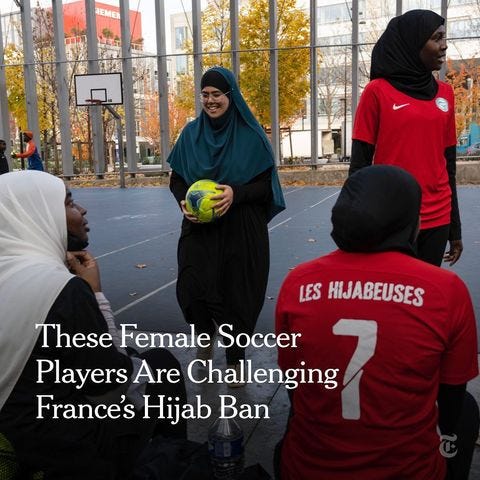Good night,
Today is Earth Day, and the Google homepage Doodle uses time-lapse satellite images of four places around the world—the melting of Kilimanjaro in Africa, the bleaching of coral on the Great Barrier Reef in Australia, the deforestation in Germany, and the melting of glaciers in Greenland—Before /After The huge contrast of the picture is shocking, and it also tries to arouse the world’s attention to the issue of climate change.
#EarthDay doodle shows the impact of #climatechange across four different locales around our planet
#GoogleDoodle #EarthDay22 @GoogleDoodles
Read more: bit.ly/3jZKJ1t

The World Walk has important stories you haven’t read yet. We focus on global issues from a gender perspective, complementing stories of dilemma, breakthrough, connection, and change that traditional power perspectives ignore.
Please pay a subscription to become our partner and walk with women around the world.
Global Hotspot
A 31-year-old woman in Spain was diagnosed twice within 20 days, and she wrote the record of the shortest interval between repeated infections among fully vaccinated medical staff.
The woman tested positive for a PCR test required at work 12 days after her third dose of the vaccine. She did not have any symptoms and returned to work after 10 days of self-isolation. She developed symptoms such as cough and fever every few days, and the PCR test again came back positive. Genetic sequencing revealed that she was infected with the Delta variant the first time and the Omicron variant the second time, with only 20 days between the two diagnoses.
Woman, 31, catches Covid twice within three weeks in Spain  Woman, 31, catches Covid twice within three weeks in Spain Scientists report shortest known gap between infections in fully vaccinated healthcare worker theguardian.com
Woman, 31, catches Covid twice within three weeks in Spain Scientists report shortest known gap between infections in fully vaccinated healthcare worker theguardian.com
out of gender
Although French law and FIFA both allow women’s players to wear the hijab, the French Football Association has for many years prohibited players from wearing religious symbols when competing, citing secular values of religious neutrality.
As women’s football in France flourishes, female Muslim players are struggling to convince their families to enjoy football, but they are constantly worried because the hijab is not allowed to play.
So 80 young players wearing hijabs have come together to launch the campaign ” Les Hijabeuses “, uniting against what they say is a discriminatory norm that “excludes Muslim women from sport” and the unfriendly attitude towards hijabs in French society ——According to a recent poll, 60% of the French support a ban on wearing hijabs on the streets, and Marine Le Pen, the far-right candidate who will face Macron in the second round of the presidential election on the 24th, also claimed that if Her election will ban the wearing of the Muslim veil in public places.
I can’t just see
New Zealand Prime Minister Jacinda Ardern arrived in Japan on the 21st to start a visit. At the welcome ceremony, a section that combined New Zealand and Japanese specialties – kiwi fruit and mascot – stole the show: in the beautiful and a little sad string Accompanied by music, two mascots with thick eyebrows and big eyes, representing green kiwi fruit and gold kiwi fruit, danced gracefully in the event venue where the crowns were gathered.
Some netizens commented that the surreal and conflicting scene was “like two kiwis messing up in a funeral”, sparking heated discussions on social media. In fact, Japan is an important market for New Zealand kiwifruit. Arden had a photo with the “Kiwi Brothers” when he visited Japan in 2019, and even hung a photo of her holding hands with the kiwi mascot in the office.
Quote of the Day
“Twist, lick and dunk” (Twist, lick and dunk)
How do you turn the cookie perfectly when eating an Oreo so that the cream center is evenly distributed between the two biscuits? Scientists at the Massachusetts Institute of Technology (MIT) are as curious as we are, and have launched a rheology (deformation and flow of objects, rheology) experiment, published in the American Institute of Physics (AIP) “Fluid Physics” ” Journal .
In order to separate the biscuits with a precise torque, the researchers designed a device called the “Oreometer”. It was found that no matter how precise the twisting force was, most of the filling would always remain on one of the biscuits; the team also disclosed the production of the Oreometer. In this way, as long as you have 3D printing equipment, you can conduct your own “Oreo science” research and use the obtained data to improve the eating experience of cookies.
“The best scientific research—even at MIT—is driven by curiosity about the world around us,” says Crystal Owens, lead author of the study, who hopes that through approachable Oreo research, academics will The general public outside the country can also draw inspiration from it to study other puzzles in the kitchen in a scientific way.
Scientists Publish Breakthrough Study in Oreo-Splitting Research  Scientists Publish Breakthrough Study in Oreo-Splitting Research A new study introduces “Oreology,” the study of the flow and fracture of sandwich cookies, to investigate if Oreo filling can be evenly split between wafers. vice.com
Scientists Publish Breakthrough Study in Oreo-Splitting Research A new study introduces “Oreology,” the study of the flow and fracture of sandwich cookies, to investigate if Oreo filling can be evenly split between wafers. vice.com
Subscribe to the Walk Around Newsletter and we’ll deliver:
[Members only] Go original: a good story that others have not written yet
An Evening News Every Day: A selection of daily news summaries for you
Weekly Newsletter: Good articles from around the world that you may have missed
A Weekly Note: A Weekly Guide to Online Activities
【Exclusive benefits for other members】» See here
This article is reprinted from: https://sehseh.substack.com/p/-oreo-
This site is for inclusion only, and the copyright belongs to the original author.







